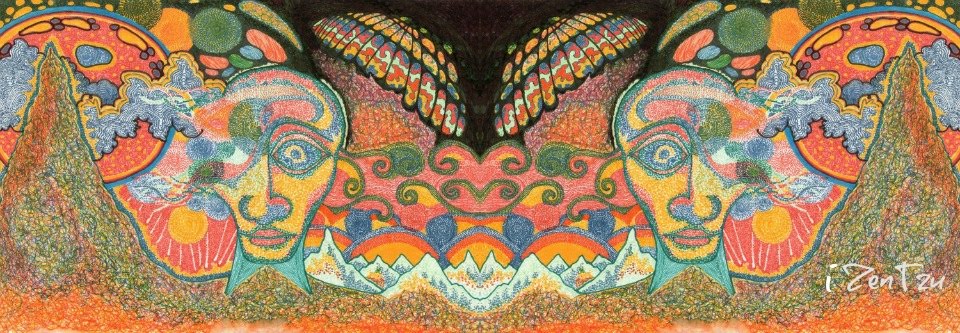A cluster of Earthquakes hit Southern Eritrea followed by an explosive eruption of the dormant Nabro volcano, forming a large ash cloud with salt and lava flows. See the excellent Earthquake Report on the Nabro eruption.
The eruption took place at the northernmost point of the 'Ethiopian Dome' at the meeting of plate boundaries and developing plate boundaries. There are two extensive dome boundaries on this area of the Nubian Plate. The Ethiopian Dome bordering on the Gulf of Aden; South of which lies the Kenya Dome with a developing plate boundary.
At the Southernmost edge of the Kenya Dome on the Tanzanian border is the dormant Mount Kilimanjaro. The June 12, 2011 Nabro Caldera eruption on the Eritrea/Ethiopia border sent a thick cloud across Northern Ethiopia that is drifting towards Saudi Arabia and possibly Egypt. The cluster of quakes preceding the Nabro eruption were sudden and intense, with the volcano releasing a 13km high explosive cloud of ash with very little warning.
Further to the South on the lower part of the Kenya Dome lies Mount Kilimanjaro, a giant stratovolcano composed of three distinct volcanic cones. Apparently two of the cones are extinct while the highest volcano cone is considered to be dormant.
Over the last few years the ice cap on the peaks of Kilimanjaro have been slowly melting, the glacier has been crumbling and many of the rivers are drying up.
I am not an 'expert', all I have is observation and imagination. Could the melting snow on the summit of kilimanjaro and the drying rivers be partly due to the extinct/dormant volcano 'heating up'.
I don't think one can underestimate the gradual surface effects from deeper pressure of lava inside of volcanoes. The heat transfer would probably (at first) be subtle. It may happen over extended periods - bit by bit - hardly noticed by us surface dwellers. I am guessing that the glacier at the top of Mount Kilimanjaro established itself at a time when the volcano was much cooler and much more dormant.
Mount Kilimanjaro, one of the largest volcanoes in the world, is what I would call a longer cycle volcano - together with Mount Vesuvius and the volcanic caldera of Santorini. It is possible that such long cycle tectonic upheaval shook ancient Egypt apart, sending some of its cities and architecture crashing into the Nile Delta where they are being found today.
In 2003 scientists concluded that there is molten magma just 400 meters below the summit crater of Mount Kilimanjaro. There have recently been concerns that the summit may collapse, causing a major eruption similar to Mount St. Helens.
The eruption took place at the northernmost point of the 'Ethiopian Dome' at the meeting of plate boundaries and developing plate boundaries. There are two extensive dome boundaries on this area of the Nubian Plate. The Ethiopian Dome bordering on the Gulf of Aden; South of which lies the Kenya Dome with a developing plate boundary.
At the Southernmost edge of the Kenya Dome on the Tanzanian border is the dormant Mount Kilimanjaro. The June 12, 2011 Nabro Caldera eruption on the Eritrea/Ethiopia border sent a thick cloud across Northern Ethiopia that is drifting towards Saudi Arabia and possibly Egypt. The cluster of quakes preceding the Nabro eruption were sudden and intense, with the volcano releasing a 13km high explosive cloud of ash with very little warning.
Further to the South on the lower part of the Kenya Dome lies Mount Kilimanjaro, a giant stratovolcano composed of three distinct volcanic cones. Apparently two of the cones are extinct while the highest volcano cone is considered to be dormant.
Over the last few years the ice cap on the peaks of Kilimanjaro have been slowly melting, the glacier has been crumbling and many of the rivers are drying up.
I am not an 'expert', all I have is observation and imagination. Could the melting snow on the summit of kilimanjaro and the drying rivers be partly due to the extinct/dormant volcano 'heating up'.
I don't think one can underestimate the gradual surface effects from deeper pressure of lava inside of volcanoes. The heat transfer would probably (at first) be subtle. It may happen over extended periods - bit by bit - hardly noticed by us surface dwellers. I am guessing that the glacier at the top of Mount Kilimanjaro established itself at a time when the volcano was much cooler and much more dormant.
Mount Kilimanjaro, one of the largest volcanoes in the world, is what I would call a longer cycle volcano - together with Mount Vesuvius and the volcanic caldera of Santorini. It is possible that such long cycle tectonic upheaval shook ancient Egypt apart, sending some of its cities and architecture crashing into the Nile Delta where they are being found today.
In 2003 scientists concluded that there is molten magma just 400 meters below the summit crater of Mount Kilimanjaro. There have recently been concerns that the summit may collapse, causing a major eruption similar to Mount St. Helens.

